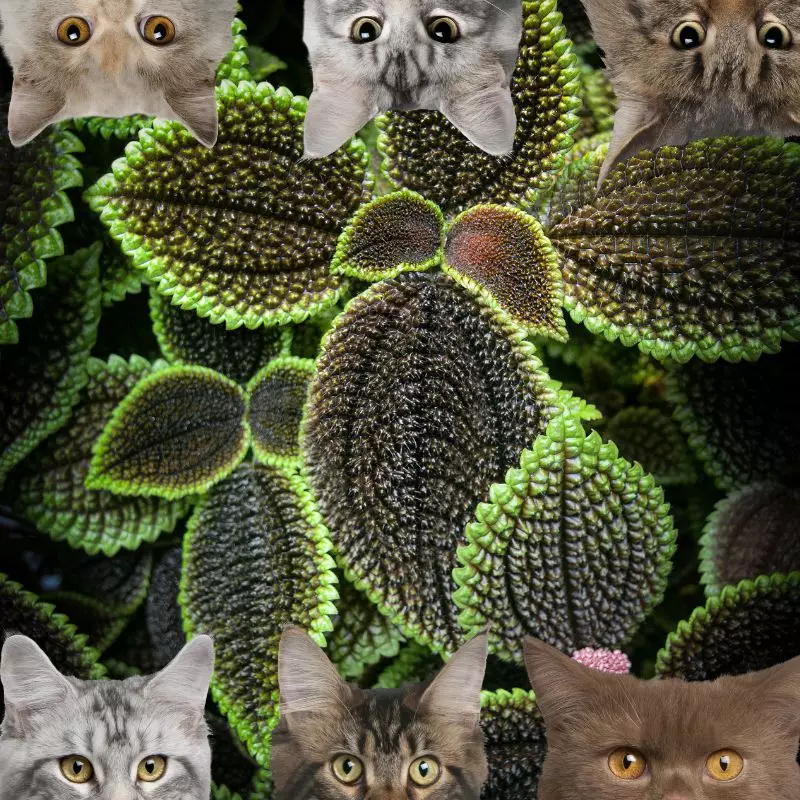The Friendship Plant, also known as Panamiga, is not toxic for cats. In fact, it is recognized as a non-toxic plant by high-authority organizations such as the ASPCA (American Society for the Prevention of Cruelty to Animals).
Our assessment is supported by extensive research and a collaborative effort with a team of experienced DVMs (doctors of veterinary medicine). Their expertise, coupled with information from trusted sources like PetMD, ensures the accuracy and relevancy of our findings on the potential risks associated with various plants, particularly the Friendship Plant, and their effects on cats.
However, it’s essential for cat owners to understand that a plant being non-toxic doesn’t necessarily mean a cat can consume it without any restrictions. Even safe plants can cause digestive upset or other minor issues if ingested in large quantities. As always, it’s recommended to keep an eye on your feline companions and exercise caution when introducing new plants into their environment.
Can Cats Eat Friendship Plant or Panamiga?

A small bite of a friendship plant will not hurt cats. Cats can actually touch, lick or munch on a part of the friendship plant without you worrying about negative effects.
If your cat continues to gnaw on your friendship plant at home, keep an eye on him or her. Cats have a low tolerance for plants because their stomach lacks the enzymes needed to break down plant components. As a result, consuming too many plants may cause them gastrointestinal upset.
Another thing to consider is the plant-care items you use on your plants. The majority of fertilizers and pesticides include chemical elements that are hazardous to the health of your cat. It is best to use natural plant-care solutions to safeguard your cats from harmful chemicals.
What is a Friendship Plant or Panamiga?

The friendship plant, also known as Panamiga, is native to Central and South America and is prized for the striking contrast of colors on its rough leaves. The underside, veining, and occasionally tips of these leaves turn a copper, burgundy color, which contrasts with the bright green stems and borders.
The friendship plant grows indoors in a warm, humid climate with bright indirect light. Pinching stem tips will preserve the plant in a more compact form. It is easily grown from stem cuttings, making sharing with friends a breeze, hence the popular name of friendship plant.
Small clusters of white blossoms appear midway down the stem and can last for several days. This process usually starts in late spring, however, some specimens may bloom before or after this period. Although Pilea flowers every year, the show is dull and is usually removed by horticulturists so that the plant may focus on the leaves.
Keeping Cats Away From Friendship Plant or Panamiga

The simplest way to drive your cats away from your plants is to use deterrents. Just make sure to only use the natural ones. Read the label and inspect the ingredients of the product carefully before using it on your plants. If you are unsure of the chemical ingredients of a product, ask your local veterinarian.
Training your cats is still the most ideal way for them to stay away from plants. Once you started this at home, your cats will get used to it and will do the same outdoors. It may take time to discipline a cat but it will benefit you later once your cat learns to follow your lead.
Plants to Avoid For Your Cats
If you are a cat owner and unsure if the plants growing in your yard are harmful to your cats, check out this list of toxic plants for cats. You can also check our list of non-toxic plants for cats.





